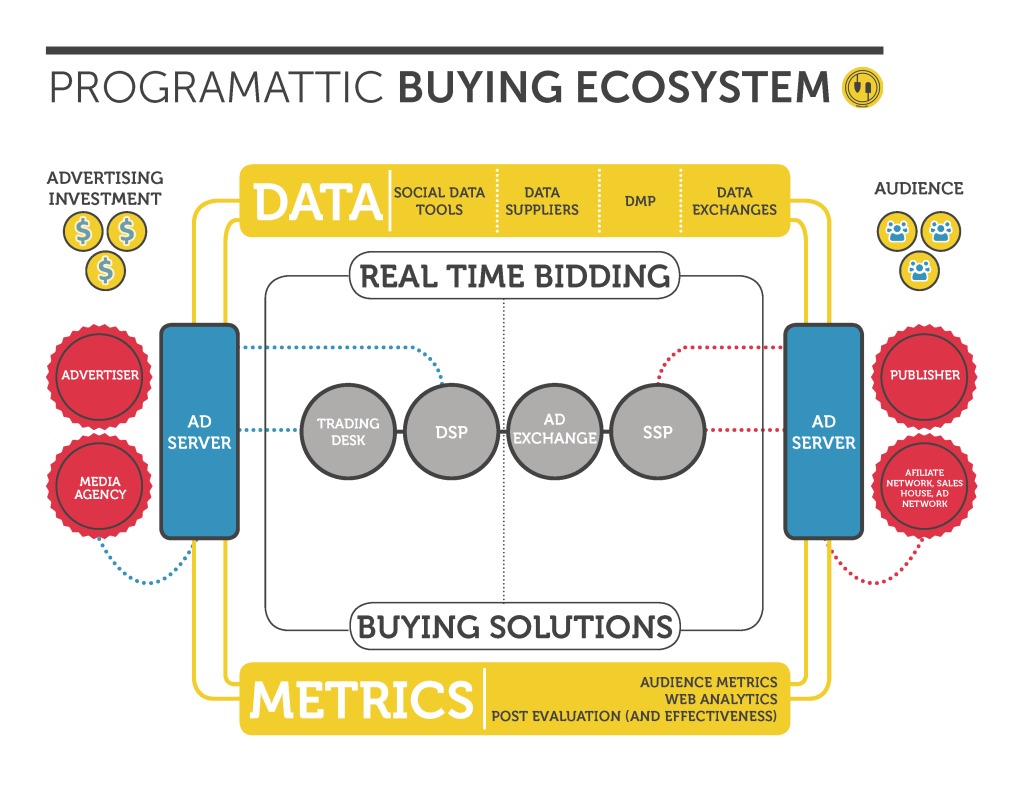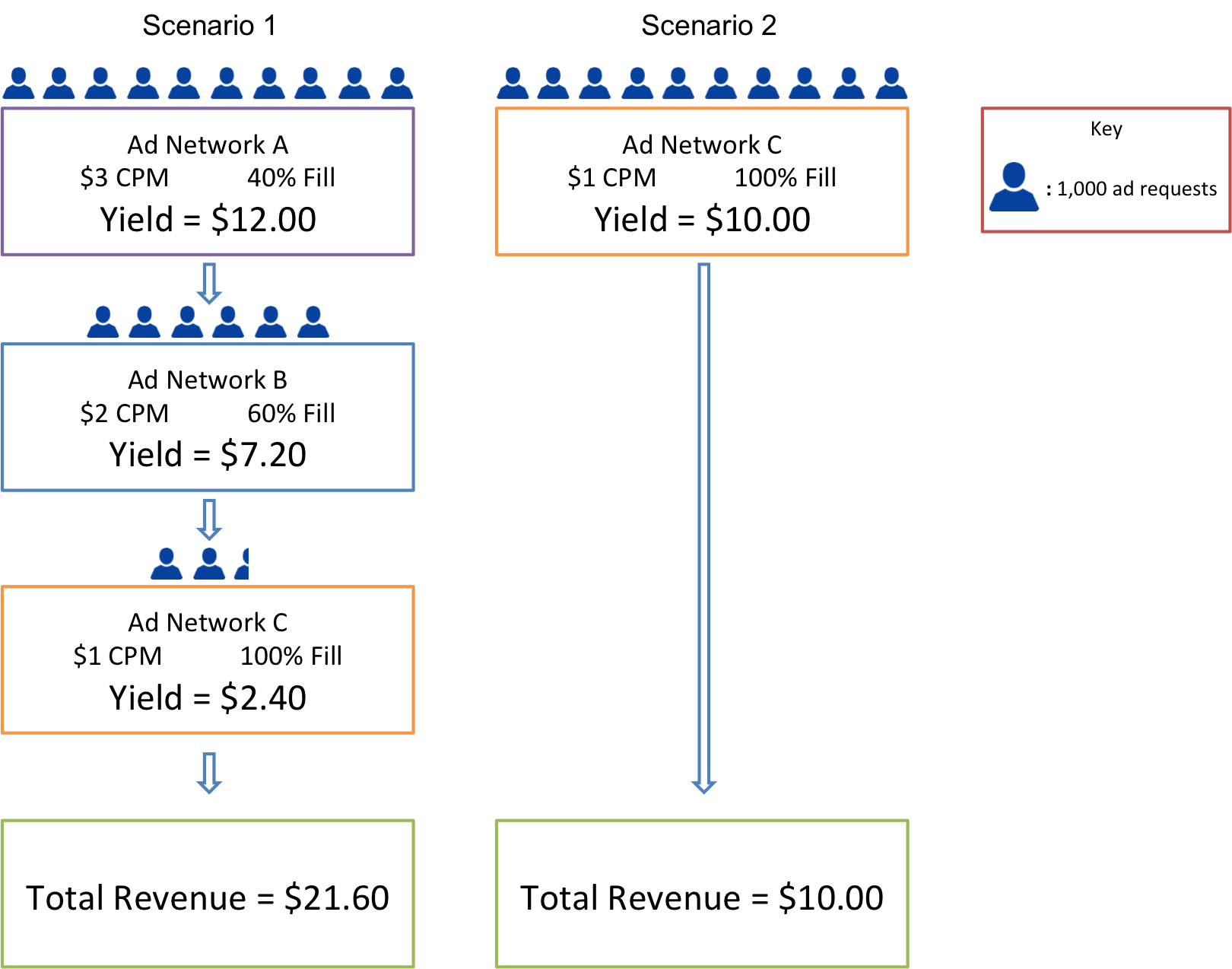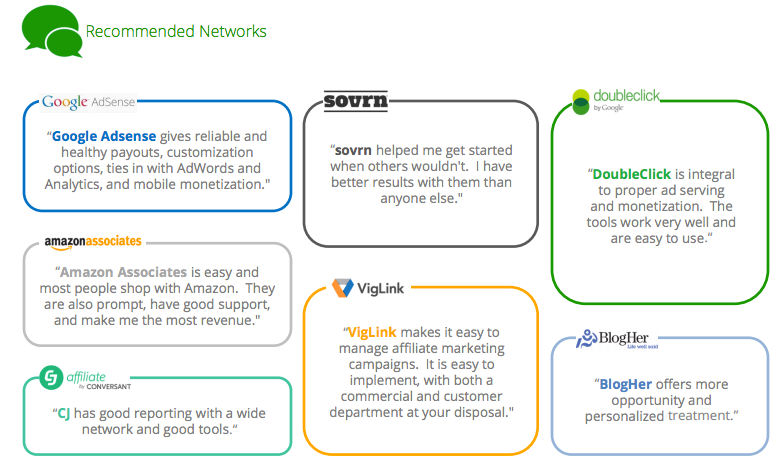Leveraging Scale
After speaking with a lot of publishers about ad stack optimization strategies, we realized that a lot of you don’t know how best to organize your ad stack. We put together some quick tips for you to follow when organizing your ad stack. By working with multiple Ad Networks, you’re able to better leverage their collective scale to further benefit your ad performance.
The idea of leveraging scale is important here.
If you are a smaller publisher, with little-to-no monthly traffic, it might be hard to get your audience in front of the right brand(s). That’s where Ad Networks step in. Whether you’re a large, ComScore 1000 publisher or a smaller, DIY blogger with under 10K monthly pageviews, you can gain value from programmatic advertising by aligning yourself with quality, publisher-focused Ad Networks. Depending on your size and/or technological sophistication, your online advertising strategy might vary a bit. For the purpose of this piece, we’ll primarily be focusing on programmatic advertising strategies and the ways in which larger and smaller publishers can extract the maximum value by strategically organizing their ad stacks with quality Ad Networks.

Bid Density
Why is it so important to pick the right ad partner? It’s simple: bid density. Each ad partner has their own unique set of buyers (note: not all buyers are created equal). The more partners you have the more buyers you have. The more buyers you have, the greater the competition. The greater the competition, the higher the CPM.
Now that you have a better understanding of the benefits of bid density, and why integrating with multiple Ad Networks is beneficial to your programmatic advertising strategy, let’s dive into what those strategies actually look like.
We’ll start with the ComScore 1000 publisher. Let’s use ESPN.com as our example (Note: no real ESPN revenue metrics used). You’re ESPN and your domestic Alexa Ranking is 25 and your monthly pageviews average around 600M, which means you have the scale and technological sophistication to integrate directly with targeted, premium brands. We refer to these integrations as “direct deals.” Maybe you have one yourself?
The obvious benefits of a direct deal are that you are receiving top CPMs from a brand you trust at a 100% fill rate. Your goal is to use this direct integration to fill as many of your first-look impressions as possible. You’re ESPN and you set up a direct deal with Gatorade to fill your ATF 300×250 with their newest ad at a $10 CPM at 100% fill rate for 200M monthly pageviews. That’s great. But you still have 400M monthly pageviews you have to monetize. That’s where programmatic advertising comes into play.
Organizing Your Ad Stack
ESPN then reaches out to all the top Ad Networks and begins testing each partner at different price floors, different positions in their ad stack and optimizes each integration to yield optimal performance. Once you gauge the CPM and fill rates from each Ad Network, you can begin organizing your ad stack. You organize your ad stack based on CPM first, then you backfill your stack with a catch-all solution that offers 100% fill with lower CPMs like Google AdSense.
Organizing your ad stack is all about identifying the strengths of your ad partners.
For example, let’s say you’re already working with Google AdSense, and you’re getting a $1 CPM and 100% fill. By placing another Ad Network with a higher CPM solution before AdSense in your ad stack, you earn more revenue for your first-look inventory and still utilize your 100% fill solution to monetize the rest.
That same concept of organizing your ad stack can be applied to any publisher, big or small. If you’re an up-and-coming, after-work DIY blogger, you might not be able to get the direct deal for $10 CPMs, but you can still strategically partner with quality Ad Networks to make sure you’re earning the most revenue for your audience.
Why You should Use More Than 1 Ad Network
If you only use one Ad Network, you might see a really high fill rate, but the CPM won’t be as high. By adding another Ad Network yielding a higher CPM to your stack, you add more revenue by increasing your eCPM (true CPM).
Let’s say you have a 300×250 ad zone that sees 10K daily ad requests. Below are two monetization scenarios. The first scenario represents a publisher utilizing multiple Ad Networks to monetize a 300×250 ad zone that sees 10,000 daily ad requests. The second scenario is that same publisher monetizing that same ad zone, but only using one Ad Network, while the second scenario depicts a publisher using only Ad Network filling at a 100%.

By partnering with multiple Ad Networks, you’re able to leverage their collective scale and increase your overall bid density, which nets you more revenue for your impressions. While not all ad partners will be a good fit for your specific audience niche, it’s worth testing to find out.
How To Organize Your Ad Stack
Once you’ve picked your ad partners, you need to decide how you’re going to implement them. The first step is identifying each partner’s strengths. Do they offer high CPMs with low fill rates or vice versa? Doing your research on your prospective partners will pay off when you’re setting up your ad stack. Ask each Ad Detwork where they need to be in your chain to give you their best performance and stack accordingly. When creating your stack, you’ll want to implement price floors to maximize your revenue. Depending on the size of your site and quality of your inventory you’ll want to implement varying amounts of Ad Networks. If you’re a smaller site, you might not need 4 Ad Networks in each ad zone. If you’re a larger site, taking advantage of more ad networks might not be a bad idea. Keep in mind, the Ad Networks with the highest quality websites will probably yield the highest CPMs.
During the most recent Publisher Roundtable, three digital advertising companies surveyed hundreds of publishers of all shapes and sizes and asked their opinions about which ad partners worked best for them, and here’s what they came up with:


